|
|
|
Resources
|
|
|
Developing low-power products with wide dynamic current ranges is new to many engineers and their managers. Even experienced engineers have
to learn a few new tricks to effectively develop these types of products (we did!). The resources on this page should be helpful to those
new to this aspect of electronic product development.
|
|
| Product App Notes |
|
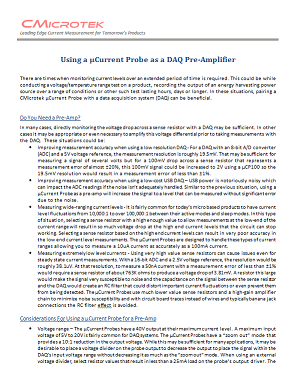 |
Using a µCurrent Probe as a DAQ Pre-Amplifier
There are times when monitoring current levels over an extended period of time is required. This could be while conducting a voltage/temperature
range test on a product, recording the output of an energy harvesting power source over a range of conditions or other such test lasting hours,
days or longer. In these situations, pairing a CMicrotek µCurrent Probe with a data acquisition system (DAQ) can be beneficial.
View on-line | Download PDF (402KB)
|
|
|
|
|
| Low-Current Measurement Whitepapers |
|
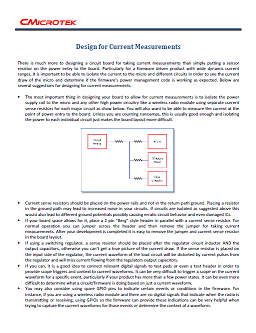 |
Design for Current Measurements
There is more to designing for current measurements than simplying putting a sense resistor at the power input to a circuit board. This
paper offers several design tips to help you to take better current measurements and make sense of them.
View on-line | Download PDF (197KB)
|
|
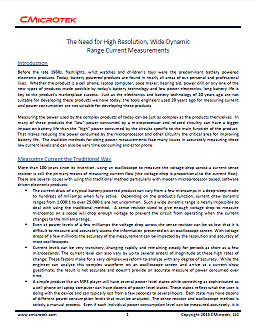 |
The Need for High Resolution, Wide Dynamic Range Current Measurements
There are several issues with using the traditional sense resistor and scope method for taking current measurements on today's low-power products,
particularly with modern microprocessor based, software driven electronic products. This paper discusses those issues and provides some
insight on important characteristics to look for in equipment for ultra-low current and power measurements.
View on-line | Download PDF (653KB)
|
|
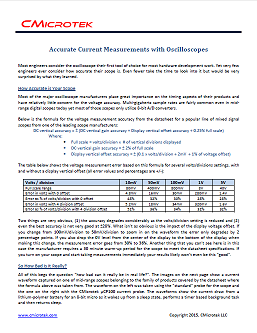 |
Accurate Current Measurements with Oscilloscopes
Most oscilloscopes have surprisingly poor accuracy in their voltage measurements, particularly in their lower volts/division settings where
low-current measurements are typically taken. This paper discusses scope voltage measurement accuracy and shows a real world comparison of
a current waveform captured with a common scope probe and sense resistor and a waveform captured using the CMicrotek µCP100 current probe on
the same scope.
View on-line | Download PDF (100KB)
|
|
|
|
|
| Low Power Design e-book |
|
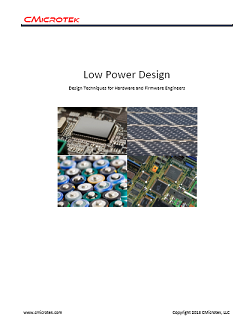 |
Most of the information on the web on low-power design is about hardware design (and mostly the same basic information repeated over and over)
yet the firmware will often determine whether a product meets its power targets or not. Our 41 page "Low Power Design"e-book offers tips and
techniques for low power hardware and firmware design, much of it may seem obvious while some of it can be very counter-intuitive. The e-book
covers these topics and more:
- Microcontroller selection
- Split power rails & powering down circuitry
- Voltage regulator simplicity vs. efficiency
- Selecting a battery technology
- Impact of heat on power consumption
- Structuring firmware for low power
- Arrays, pointer and structures
- Floating point math and complex algorithms
Download Low Power Design e-book.
Click here to view the Table of Contents from the Low Power Design e-book.
|
|
|
|
|
| External links for low-power design |
|
There is a considerable amount of information on design for battery-powered and other low-power products on the web. Here are a few places to
start. Please help us build up this list by letting us know about the other blogs and websites that you like that
focus on low power design. |
|
|
|
|
|
|
|